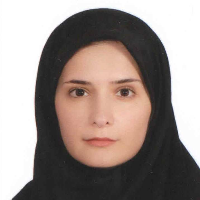History of Music ensemble and instrumental accompaniment in the Islamic era of Iran until the Qajar
Author(s):
Article Type:
Research/Original Article (دارای رتبه معتبر)
Abstract:
The purpose of this study is to investigate the trend of developments in music ensemble during the history of Persian music, from the Islamic era up to the Qajar Era. This research is divided into two sections based on the number of instruments in a music ensemble and the accompaniment of the instruments. Music ensembles in Persian history may be traced in both written and pictorial resources. The notable point is the lack of discussion about this genre in Persian music treatises. One reason for this absence of information is due to the significance of the lead singer and solo performances thus overshadowing the music ensemble throughout history. On the other hand, the absence may reflect the importance of theoretical discussions in this treatise where practical aspects of music have been addressed less frequently and have always been under the influence of an almost unique pattern of theory. In this passage, from the book of Farabi, Ketab al-Musiqa al-Kabir, there is one significant reference to a duet performance. We find that regardless of the fact that more than two instruments are present in many performance situations, Farabi has solely focused on a duet performance. As well, his main objective to describe duet performances is to explicate the tonal system in the instruments, because his main attention was to delineate different instruments tones with lute tones. Farabi has been inattentive to other topics influencing music ensemble, as he has only discussed the tones system of the instruments. Other available resources shedding light on music ensemble in history of Iran are iconographic resources. Upon examination of different references, it comes to our attention the significance of solo performances, followed by the presence of a small number of instruments in the background of the images depicting the music ensembles. Accordingly, duet performances are the most frequently depicted and music ensembles with more than five instruments are rarely observed. Solo performance images constitute about 70 percent of all illustrations. Another issue is about the accompaniment role of certain instruments. According to the statistics extracted from analysis of Persian miniatures, a combination of two types of plucked and wind instruments constitute the most frequent images of accompanimental instrumentation. Accompaniment of two identical instruments is rarely observed. In trio performances, a combination of two plucked instruments and a wind or a bowed instrument comprises the most frequent arrangement. Music ensembles with the highest frequencies are those in which there is a balance between plucked and bowed or wind instruments. Analysis of the above results reveals that earlier generations steadily examined the finest balance of sound between plucked, bowed or wind instruments in music ensembles, and were sensitive to which instruments are best complementing each other. Even in a closer analysis of the miniatures, one can realize the importance of music ensembles with certain favored instruments. For instance, the accompaniment of harp and flute followed by harp and lute are the most frequently depicted combinations in duet performances, and the most popular combination in trio performances constitute the arrangement of harp, lute and flute.
Keywords:
Language:
Persian
Published:
Honar-Ha-Ye-Ziba: Honar-Ha-Ye Mosighi Va Namayeshi, Volume:24 Issue: 62, 2019
Pages:
5 to 16
magiran.com/p2014704
دانلود و مطالعه متن این مقاله با یکی از روشهای زیر امکان پذیر است:
اشتراک شخصی
با عضویت و پرداخت آنلاین حق اشتراک یکساله به مبلغ 1,390,000ريال میتوانید 70 عنوان مطلب دانلود کنید!
اشتراک سازمانی
به کتابخانه دانشگاه یا محل کار خود پیشنهاد کنید تا اشتراک سازمانی این پایگاه را برای دسترسی نامحدود همه کاربران به متن مطالب تهیه نمایند!
توجه!
- حق عضویت دریافتی صرف حمایت از نشریات عضو و نگهداری، تکمیل و توسعه مگیران میشود.
- پرداخت حق اشتراک و دانلود مقالات اجازه بازنشر آن در سایر رسانههای چاپی و دیجیتال را به کاربر نمیدهد.
دسترسی سراسری کاربران دانشگاه پیام نور!
اعضای هیئت علمی و دانشجویان دانشگاه پیام نور در سراسر کشور، در صورت ثبت نام با ایمیل دانشگاهی، تا پایان فروردین ماه 1403 به مقالات سایت دسترسی خواهند داشت!
In order to view content subscription is required
Personal subscription
Subscribe magiran.com for 70 € euros via PayPal and download 70 articles during a year.
Organization subscription
Please contact us to subscribe your university or library for unlimited access!



